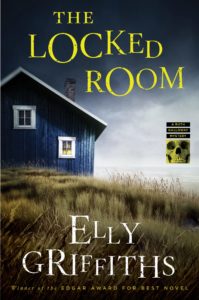 I have devoured every word of the Ruth Galloway series, and each time I pick one up, I am reminded again what wonderful, pure reads these books are. From the second you crack open the first page to the moment you close the cover at the end, Griffiths as a storyteller holds her reader completely in her grasp. Under her spell. Bewitched. This book is no different, though it was, to me, a bit more intense and a bit more grim as she confronts covid front and center.
I have devoured every word of the Ruth Galloway series, and each time I pick one up, I am reminded again what wonderful, pure reads these books are. From the second you crack open the first page to the moment you close the cover at the end, Griffiths as a storyteller holds her reader completely in her grasp. Under her spell. Bewitched. This book is no different, though it was, to me, a bit more intense and a bit more grim as she confronts covid front and center.
It is historically significant to have lived through a pandemic – and we seem to be emerging from it at last – but as you live through something historically significant, you have no actual perspective. A start to gaining some perspective is to read a thoughtful examination of just what happened, which Griffiths provides her reader. As the book opens, Ruth is teaching an archeology class and she gets a call that there’s body on a construction site. She takes the class along as a learning experience, event letting the students bag up the bones for transportation at the end. The students are curious to discover if the body comes from a plague pit, a foreshadowing of what’s to come.
Meanwhile, Harry Nelson and his team are looking into the mysterious suicide of an apparently happy woman inside of a locked room in her own home. It makes perfect sense but it also makes no sense at all, and on Harry’s team, Judy especially cannot let this one go. When several other similar deaths seem to form a pattern, Nelson and his team are on it.
Ruth is welcoming a new neighbor, and Harry is home alone as his wife and young son are off visiting his mother-in-law. Ruth is also sorting through her mother’s things as her father’s new wife wants to do some redecorating, and she discovers an old photo of the house she now lives in – a photo taken before she was born. These are many threads to weave together, but Griffiths manages to do so effortlessly.
And the real guest of honor in this book is covid, as the events start off in February of 2020. As covid begins to take hold and lockdowns begin to roll out – the awkwardness of wearing masks, the loneliness of staying apart, the weirdness of zoom, the lack of cars on the road and the need to socially distance when you are in the same room – all of these things come rushing back as Griffiths brings them again to vivid life. I found it somewhat painful to read about.
However, Griffiths does not write books as sociology experiments, and this one is no different. There is a covid death early on, and then one of the central series characters comes down with a very bad case of it, requiring hospitalization and a ventilator. In this way Griffiths draws the reader even further in emotionally.
I was recently at a conference where I interviewed author Ellen Hart, who talked about the “hook and pull” of narrative. One chapter gives you a hook, the next one pulls you through it. Hart is an expert at this technique, and so too is Elly Griffiths. She supplies a hook, she whisks you to another story thread to pull you through, and then in the next chapter comes up with another hook. It’s very hard to stop reading a book like this. Technique and a bit of narrative magic are both at work.
I don’t think I’ve cried so much at the end of any book (maybe Charlotte’s Web) as I did at the end of this one. While this was an intense and dark retelling of recent events, it’s an ultimately redemptive and hopeful one. This is another spectacular read from the talented Griffiths.